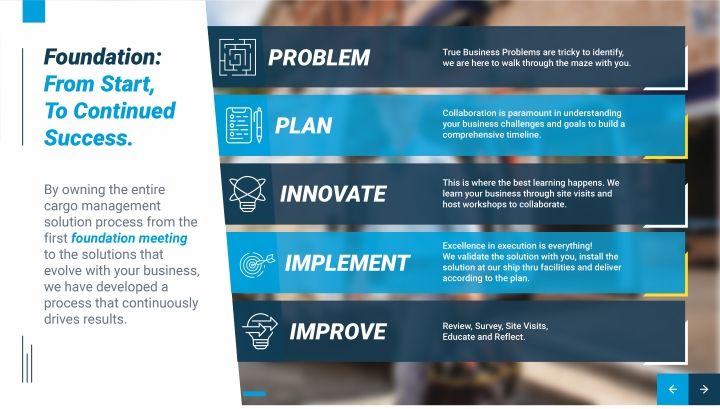For delivery and service fleets, upfitting is part and parcel of the spec’ing process. It’s also one of the most complex aspects of acquiring a vehicle.
Because of this, mistakes can be made, resulting in a cargo van or truck that is not optimized to do the work the fleet and its company needs. As a result there could be a need for a costly correction or, worse, technicians will have to use a vehicle that doesn’t fit their work needs until it can be cycled out of the fleet. In either scenario, the fleet operation will experience less productivity.
But upfitting doesn’t have to be a nail-biting experience for fleet managers. By partnering with an upfitter that will support the fleet every step of the way from the initial meeting to final installation and beyond, fleet managers can rest easy and have confidence in the productivity of their vehicles.
Building a Partnership
Fleets have numerous partners — fleet management companies, third-party maintenance providers, and even their insurers — but of all of them the fleet’s upfitter may have one of the biggest roles to play in the success of a fleet organization.
Without a properly designed or planned upfit, the fleet will be hard pressed to fulfill its role in the company, and, instead, be an immediate drain on the bottom line.
What is needed for a strong upfit partnership? There are several qualities, including:
- Trust
- Open communication
- Clear understanding of goals
Matching these shared values is critical in building a successful working relationship, but it’s just the first step.
The next is taking these relationship building blocks and using them to create a collaborative process fully dedicated to delivering the best upfit for the fleet.
The 5 Elements of Upfitting Success
Broadly, there are five steps that will help guarantee a successful upfit:
- Problem Solving: Every upfit presents a unique set of challenges in terms of operational efficiency, safety, and feasibility. A strong upfit partner will ask questions and offer solutions that align with the fleet’s operational needs.
- Plan: Upfitting needs planning and coordination. This is where collaboration becomes paramount. An understanding of the fleet’s business goal and challenges is necessary to build a comprehensive timeline.
- Innovate: Collaboration doesn’t end at the planning stage. It’s just the beginning. Upfitting isn’t a cookie-cutter process. It involves developing new approaches and processes, and most importantly keeping an open mind.
- Implement: Upfit quality is critical and having a partner with the facilities and expertise, who is also able to meet the timeline will mean a vehicle delivered on time and ready to produce.
- Improve: Most importantly, fleets need a partner that doesn’t stand still. Reviewing designs through regular communication and site visits will allow the upfitter to make adjustments and further innovations to an upfitting design, helping the fleet increase its productivity while being safe and efficient.
A strong upfitting partner will take the process not only from beginning to end, but will have a commitment to remain up-to-date on the latest technologies and best practices, working with its fleet partners to educate and guide them through the process always with a goal of fleet operational success.
Enter Adrian Steel
For nearly 70 years, Adrian Steel has been helping fleets develop upfits to maximize technician productivity and the bottom line.
As a collaborative partner, Adrian Steel is there for its client partners, working closely with them using the above five steps for upfitting success.
To learn more about Adrian Steel and if it is the right partner for your fleet visit https://www.adriansteel.com/buy/fleets/
Source: https://www.automotive-fleet.com
CUT COTS OF THE FLEET WITH OUR AUDIT PROGRAM
The audit is a key tool to know the overall status and provide the analysis, the assessment, the advice, the suggestions and the actions to take in order to cut costs and increase the efficiency and efficacy of the fleet. We propose the following fleet management audit.





